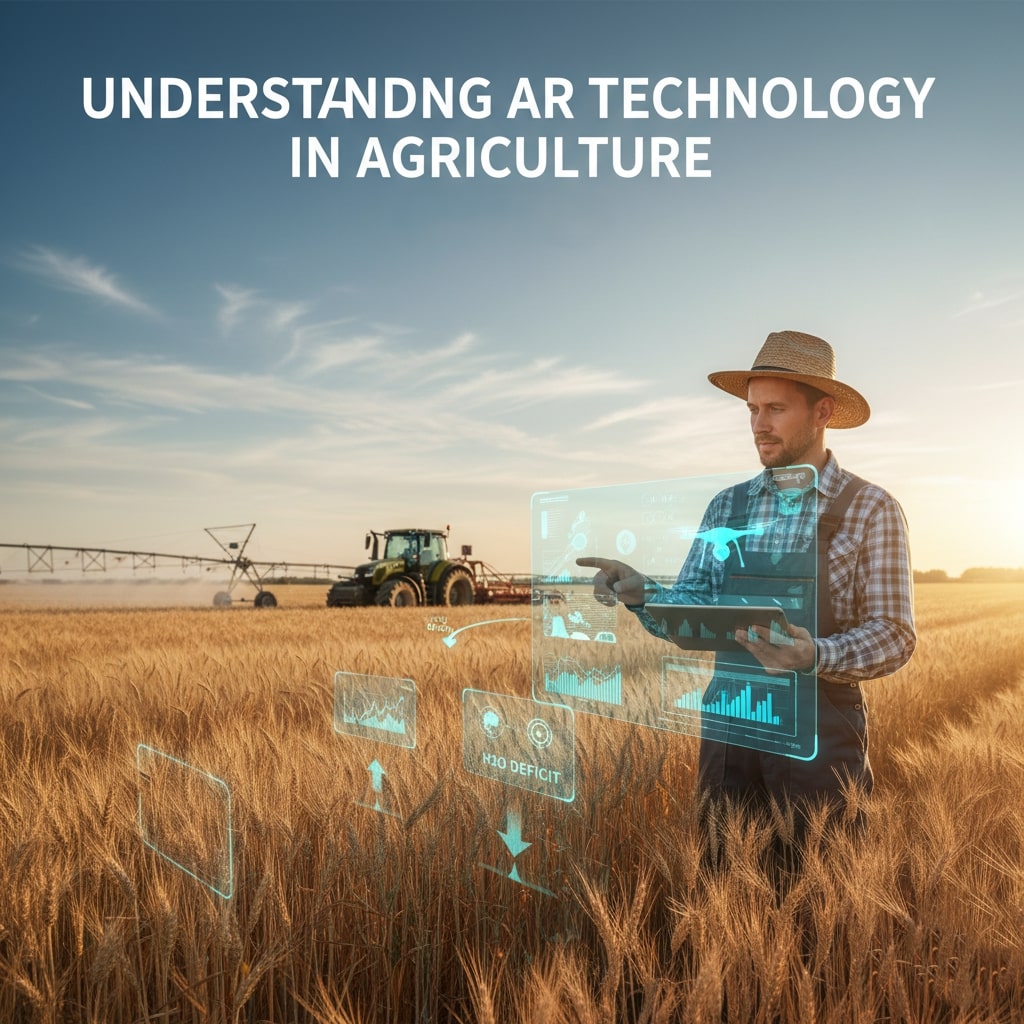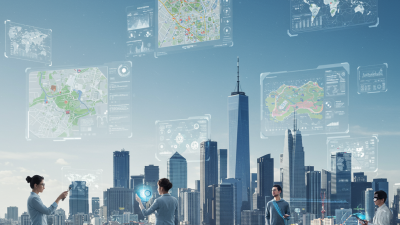In an era where feeding a growing global population while preserving environmental resources has become one of humanity’s greatest challenges, agriculture stands at a technological crossroads. Traditional methods of crop and livestock management are being rapidly augmented by digital innovation, and at the forefront is Augmented Reality (AR). By overlaying real-time data, 3D visualizations, and interactive guidance onto physical farm environments, AR empowers farmers to make smarter, faster, and more sustainable decisions. This comprehensive guide explores how AR is reshaping every stage of the agricultural value chain—from seed to table—and offers practical insights on adopting AR solutions to boost productivity and environmental stewardship.
Understanding AR Technology in Agriculture

Augmented Reality blends digital information with the user’s physical surroundings. On the farm, that means farm managers or field workers wearing AR-enabled devices—such as smart glasses, tablets, or handheld scanners—can view contextual data superimposed onto crops, soil, or machinery. Imagine pointing an AR headset at a wheat field and instantly seeing soil moisture levels, nutrient deficiencies highlighted in red, or optimal harvest windows. This real-time, location-based intelligence streamlines decision-making, reduces guesswork, and minimizes waste. AR platforms typically integrate GPS, remote sensing (drones or satellites), IoT sensors, and AI analytics to deliver seamless in-field guidance.
Precision Crop Monitoring and Management
One of AR’s most compelling applications is precision crop monitoring. Traditional scouting methods rely on manual field walks and visual inspections, which can be time-consuming and error-prone. AR accelerates the process by pulling data from soil probes, weather stations, and drone imagery into a unified interface. Workers scan rows with an AR device to detect early signs of stress—be it water deficiency, nutrient imbalance, or pest infestation. Color-coded overlays indicate which areas need attention, while interactive charts project yield forecasts based on current conditions. This granular insight allows targeted interventions, conserving water, fertilizers, and pesticides while maximizing yields.
Soil Health and Nutrient Management
Healthy soil is the foundation of sustainable agriculture. AR tools help agronomists and farmers visualize soil composition and nutrient levels in real time. By linking handheld AR scanners to lab test results, users can walk across fields and see virtual maps of pH distribution, organic matter content, and micronutrient hotspots. These maps guide variable-rate application of lime, compost, or specialty fertilizers directly to deficient zones. Farmers can also simulate different treatment scenarios in AR—observing projected crop responses over time—before committing resources in the field. This precision approach enhances soil fertility, reduces chemical inputs, and lowers operational costs.
Optimizing Irrigation and Water Usage
Water scarcity poses a critical risk for agriculture worldwide. AR platforms integrated with soil moisture sensors and weather forecasts enable dynamic irrigation management. Farmers wearing AR-enabled devices receive visual cues—such as blue hues over adequately hydrated areas and orange or red alerts for drought stress. Interactive dashboards display water usage metrics, evapotranspiration rates, and predicted rainfall. Users can adjust pivot irrigation systems, drip schedules, or micro-sprinklers on the fly. By applying water only where and when it’s needed, AR-driven irrigation reduces waste, conserves resources, and promotes crop resilience against drought conditions.
Pest and Disease Detection
Early detection of pests and diseases is essential to prevent large-scale crop losses. AR networks connected to machine learning models can identify abnormal leaf patterns, lesion shapes, or insect damage. When a field scout inspects plants with a tablet or smart glasses, the AR app flags suspect areas with bounding boxes and provides probable diagnoses. It then recommends eco-friendly treatment options—such as biocontrol agents or targeted sprays—and tracks intervention efficacy over time. This time-sensitive, data-driven approach limits pesticide usage, safeguards beneficial insects, and ensures regulatory compliance in food production.
Enhancing Livestock Management

Augmented Reality extends beyond crops to the realm of animal agriculture. Livestock producers use AR headsets and wearables to monitor herd health, reproduction cycles, and feeding patterns. By scanning animal tags or ear tags with AR devices, farmhands view digital profiles containing vaccination history, weight gains, and milk production metrics. Interactive alerts signal anomalies—such as fevers or reduced feed intake—enabling immediate veterinary intervention. Virtual checklists guide workers through milking protocols, biosecurity measures, and birthing assistance, reducing human error and enhancing animal welfare standards.
Machinery Maintenance and Operator Training
Modern agricultural equipment is complex, featuring GPS auto-steering, telematics, and hydraulic systems. AR streamlines machinery upkeep by overlaying step-by-step repair instructions directly onto components. Technicians wearing AR smart glasses see virtual arrows pointing to faulty valves or belts, alongside torque specifications and safety warnings. Remote experts can also view the technician’s field of vision, annotate components in real time, and guide repairs from thousands of miles away. Additionally, AR simulations facilitate operator training, allowing new hires to practice equipment operation in a risk-free virtual environment before working on live machines.
Supply Chain Transparency and Traceability
Consumers increasingly demand to know the origin and journey of their food. AR enhances supply chain transparency by embedding digital “breadcrumbs” into produce packaging. Shoppers scan QR codes or point their AR apps at labels to visualize farm locations, harvest dates, processing steps, and sustainability certifications. Retailers and distributors also use AR dashboards to track shipments, inventory levels, and cold chain compliance. This end-to-end visibility builds trust, reduces waste through better inventory rotation, and ensures rapid recalls if safety issues arise.
Real-World Case Studies
- Vineyard Precision Management: A California winery implemented AR headsets for vine health monitoring, reducing chemical use by 30% and increasing grape quality ratings by 15%.
- Dairy Farm Efficiency: A midwestern dairy operation equipped workers with AR tablets to track cow health data, cutting vet visit response times in half and boosting milk yield per cow by 8%.
- Smart Greenhouse Automation: A hydroponic vegetable grower integrated AR with IoT sensors to fine-tune nutrient delivery, achieving year-round harvest cycles and reducing energy use by 20%.
Challenges and Considerations
Despite its promise, AR adoption in agriculture faces hurdles. High upfront costs for hardware and software licensing can deter smallholders. Connectivity in remote fields may be unreliable, limiting real-time data access. Integrating AR platforms with legacy farm management systems requires careful planning and potentially custom APIs. Additionally, workforce training is crucial; users must become comfortable navigating virtual menus while performing physical tasks. Finally, data privacy and security protocols must protect sensitive farm information from unauthorized access or cyber threats.
Future Trends in AR-Powered Farming
The future of AR in agriculture is intertwined with advances in AI, 5G, and edge computing. AI-driven predictive models will refine crop forecasts, while real-time edge analytics will deliver ultra-low-latency insights directly in the field. Wearable AR lenses—thinner and more ergonomic than current headsets—will become mainstream, enhancing worker comfort. We’ll also see greater convergence of AR with robotics, enabling autonomous drones and field robots guided by AR-mapped waypoints. Blockchain integration may further elevate traceability, securing immutable records of every agricultural transaction.
Implementing AR on Your Farm: Best Practices
- Assess Your Needs: Conduct a pilot study to identify pain points—be it irrigation waste or pest management—and match them with AR use cases.
- Choose Scalable Solutions: Start with modular AR apps that integrate easily with existing farm management software and IoT devices.
- Train Your Team: Develop hands-on training programs and partner with AR vendors for ongoing support and updates.
- Monitor ROI: Track key performance indicators—water saved, yield increases, input reductions—and adjust strategies accordingly.
Environmental Sustainability and Social Impact
By enabling more efficient resource use, AR contributes to environmental sustainability goals such as reduced greenhouse gas emissions and minimized chemical runoff. Precision applications lower water consumption and carbon footprints, while targeted pest control protects biodiversity. Socially, AR can empower smallholder farmers in developing regions by providing accessible, language-adaptive guidance. As AR hardware costs decline and connectivity improves, equitable access will expand, helping bridge productivity gaps and strengthen food security worldwide.
Conclusion
Augmented Reality is no longer a futuristic novelty—it’s an actionable technology driving the next green revolution in agriculture. From real-time crop diagnostics and precision irrigation to livestock welfare and transparent farm-to-fork traceability, AR empowers farmers to maximize yields, optimize inputs, and uphold sustainability standards. As hardware becomes more affordable and data ecosystems mature, early adopters will gain a competitive edge. By embracing AR today, agriculture can cultivate a more productive, resilient, and equitable future for farmers and consumers alike.





